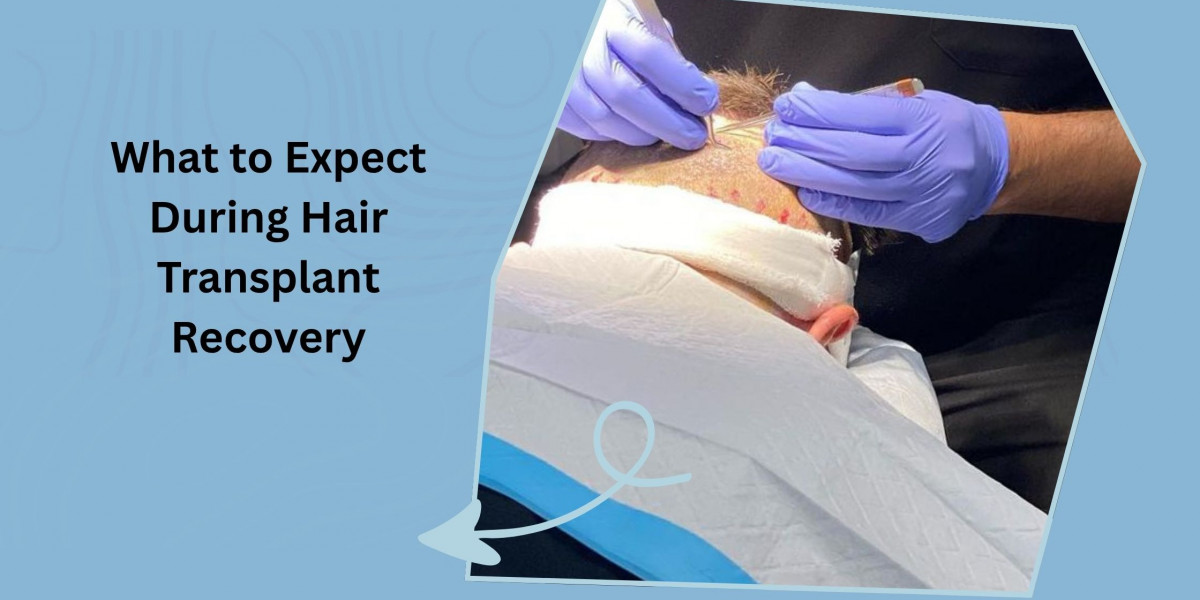While a hair transplant offers a transformative solution for hair loss, the journey does not end with the procedure itself. Understanding the hair transplant recovery process iskey to achieving optimal results and avoiding potential complications. Whether you're preparing for the procedure or are already in the post-op phase, knowing what to expect can help you navigate this time with confidence and peace of mind.
Understanding Hair Transplant Recovery
The recovery period after a hair transplant is crucial for achieving the best possible results and enhancing the overall success of the procedure. Regardless of the method used, hair transplant recovery typically follows a similar progression, although the specifics may vary depending on the technique, such as FUE or FUT. Hair transplantation occurs in several key phases, and with proper aftercare, the healing process is generally smooth and efficient. It's completely normal for the newly transplanted hair to shed during the initial weeks; this is a natural part of the hair growth cycle. In time, new hair will begin to grow in its place, marking the start of lasting results. For patients opting for an FUE hair transplant, the recovery is often quicker and more comfortable, with minimal scarring compared to FUT. Still, both procedures offer high success rates, and recovery can vary depending on individual health, the number of grafts transplanted, and personal healing response.
The Hair Transplant Recovery Timeline
Over the first year following a hair transplant, the healing process can be divided into multiple significant stages. Below is a general overview of what you can anticipate during each stage of the process:
Post-Transplant Timeline: The First Few Days
First 24 to 48 Hours
In the first 24 to 48 hours after surgery, patients typically experience some mild swelling, tenderness, and redness in the treated areas. This is completely normal. During this early phase of hair transplant recovery, it's vital to avoid touching the scalp or washing your hair. The grafts are freshly implanted and still fragile, and any unnecessary friction can dislodge them. Patients are typically provided with a hydration spray for the scalp and instructed to keep their head elevated while sleeping to help reduce swelling. Opting for button-down shirts is recommended to avoid disturbing the scalp when dressing.
Days 2 to 7
By the second day, patients may gently rinse their scalp using a recommended technique and mild shampoo. Scabs will start to form around the transplanted grafts, which is a normal part of hair transplant recovery. Avoid picking or scratching the area; this can disrupt healing and even cause permanent loss of grafts. During this stage, most people can resume light daily activities and even return to non-physical work. However, avoid intense physical activity, direct sunlight, and swimming to prevent infection or irritation.
First Two Weeks After Surgery
Between days 7 and 14, most of the scabs will naturally fall off, and the transplanted hair will begin to shed. This shedding phase, also called shock loss, is a typical step in hair transplant recovery and not a cause for concern. It simply means that the follicles are adjusting and preparing for a new growth cycle. While visible hair growth hasn't started yet, the healing beneath the scalp is actively progressing. Patients should continue to follow all aftercare instructions and avoid styling products or hair tools during this period.
Weeks 3 to 8: Early Recovery Phase
The early recovery phase is when patients might feel impatient, as there may be little to no hair growth during this time. However, this is entirely normal in the timeline of hair transplant recovery. Around the third or fourth week, some light stubble may appear, but it often falls out as the new growth cycle resets. Mild itching or numbness may occur in some individuals, but it typically subsides on its own over time. It's essential to stay positive and trust the process. Your new hair is on its way to growing.
3 to 6 Months: New Growth Begins
This is when things start to get exciting. Around the third month, small, fine hairs will begin to grow from the implanted follicles. By month six, these hairs become more visible and start to thicken. While every patient is different, this is generally the time when progress becomes more noticeable. The most important thing to remember during this stage of hair transplant recovery is consistency. Continue taking any prescribed medications or topical treatments, and maintain a healthy lifestyle to support your hair health.
6 to 12 Months: Final Results Take Shape
The six-to-twelve-month period is when patients can truly enjoy the results of their hair transplant. The new hair becomes longer, denser, and more natural-looking. For many, the hairline and crown areas show significant improvement, helping restore confidence and appearance. Although hair transplant recovery may seem slow, the full results are well worth the wait. Certain patients may require additional touch-up procedures or follow-up sessions, depending on the severity of their hair loss and their individual restoration goals.
Tips for a Smooth Recovery
- Carefully follow all post-operative guidelines provided by your surgeon.
- Use only approved shampoos and products.
- Avoid strenuous activities and heat exposure in the early weeks.
- Stay hydrated and consume nutrient-rich foods to support your healing process.
- Refrain from smoking and alcohol, as both can hinder the hair transplant recovery process.
Being gentle with your scalp and maintaining consistency in your care can significantly impact your results.
Conclusion
The journey of hair transplant healing is one of patience, care, and transformation. From the first scab to the final strand of thick, healthy hair, every stage brings you closer to renewed confidence. By understanding what to expect and following your doctor's advice, you can maximize your results and enjoy a smooth healing experience. For expert care, advanced techniques, and personalized support throughout your hair transplant journey, our clinic is a trusted name in the field. Their commitment to patient education and post-surgery support ensures you achieve outstanding results with confidence and ease.







